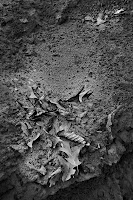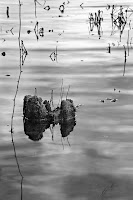 It has been quite some time since I've posted any new images; indeed, it has been quite some time since I've captured any. While an unqualified virtue of being a devout "amateur" photographer is that I am (for the most part) able to focus my attention on the kind of photographs I like to take (rather than shoot for clients and cater to their needs); the downside is that my "day job" always has priority; and the past few months have been particularly busy.
It has been quite some time since I've posted any new images; indeed, it has been quite some time since I've captured any. While an unqualified virtue of being a devout "amateur" photographer is that I am (for the most part) able to focus my attention on the kind of photographs I like to take (rather than shoot for clients and cater to their needs); the downside is that my "day job" always has priority; and the past few months have been particularly busy.So, what does this amateur photographer do when he finally finds a few precious moments to prowl around with his camera? He ventures off in search of the primitive metapatterns (identified a few years ago by my then 6yo son as forming the core of his dad's "eye"): rocks, leaves and water.

Of course, these metapatterns both arise and persist mostly due to happenstance as I can travel only so far from home for my "safaris" and usually wind up taking short nature walks at local parks. On the other hand, these metapatterns are also almost always (as noted by my son) those that I turn to first after a long period of relative inactivity. I have learned from experience that these simple, timeless, themes rejuvenate my soul, and refocus my mind from equations, computer code and technical reports to more artful pursuits.

What is fascinating to me is how much "rust" I always find in the artful part of my brain, even after what (objectively speaking) is only a relatively short time "away" from the camera. Photographers (likely all artists!) know precisely what I mean by this. It is not that I have forgotten the technical aspects of my craft (f-stops and such); it is simply that what is usually an effortless act of unconscious composition, is, for a time at least, anything but effortless. I feel the process, as though my eye/I is moving through molasses. The same is true for any craft, of course (even physics: though I find that I must be away from that for a considerably longer time to feel the same degree of "rust"). But there is something subjectively different about art; in that the artist's rust seems to appear virtually simultaneously with the artist losing his/her engagement and total immersion.

A less convoluted way of saying the same thing, I suppose, is that our muse simply wanders off when we lose attention. Hardly a surprise in hindsight, and something I always relearn as I try to reconnect with my muse.













